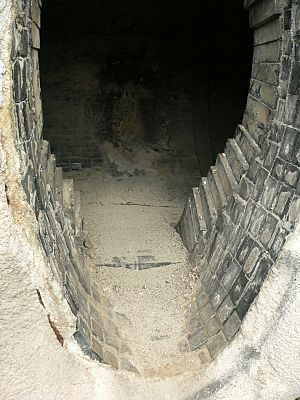Refractory facts for kids
A refractory is a special kind of material that can handle very, very high temperatures without melting or breaking down. Think of it like a superhero material for heat! These materials are super important in places where things get incredibly hot, like inside furnaces, kilns (which are ovens for pottery), incinerators (where trash is burned), and reactors (where chemical reactions happen).

To make a refractory material, scientists use substances that are very strong and stable even when it's super hot. Some common materials used include alumina, silica, magnesia, and lime. These materials are chosen because they don't change much chemically or physically at high temperatures.
Contents
What are Refractories Used For?
Refractories are essential in many industries that deal with extreme heat. They line the inside of equipment to protect the outer structure from melting or getting damaged.
- Furnaces: These are large ovens used to melt metals or make glass. Refractories keep the heat inside.
- Kilns: Used for baking pottery, bricks, or cement. Refractories help the kilns reach and hold very high temperatures.
- Incinerators: These burn waste at high temperatures. Refractories protect the walls from the intense heat.
- Reactors: In chemical plants, reactors might need to operate at high temperatures. Refractories ensure they work safely.
Different Kinds of Refractories
Just like there are different types of jobs, there are different types of refractories. They can be grouped in a few ways:
Based on What They Are Made Of
Refractories can be made from different materials, which gives them different properties.
- Acidic refractories: These are good at handling acidic conditions.
- Neutral refractories: These work well in both acidic and basic environments.
- Basic refractories: These are strong against basic (alkaline) substances.
Based on How Hot They Can Get
Refractories are also classified by how much heat they can stand:
- Normal refractory: Can handle high temperatures, but not the highest.
- High refractory: Designed for even hotter conditions.
- Super refractory: These are the champions of heat, able to withstand extremely high temperatures.
See also
 In Spanish: Material refractario para niños
In Spanish: Material refractario para niños

